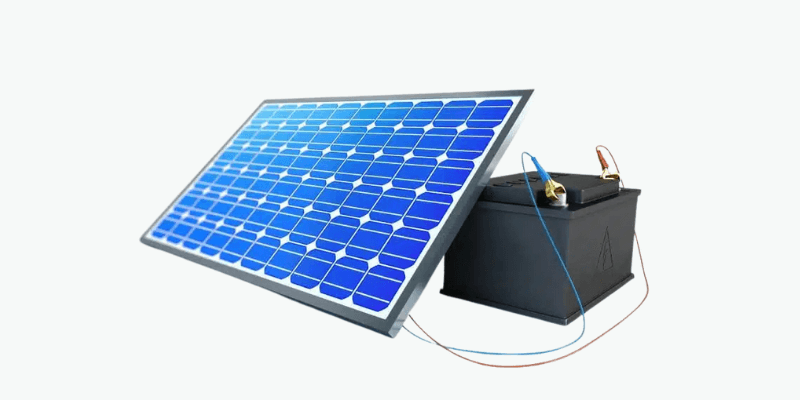Accumulo di energia è vitale per la vita moderna, poiché molte aziende dipendono dalle batterie per gli utensili elettrici, l'illuminazione e le attrezzature nei siti di lavoro. Quando la Shore Power non è disponibile, lo stoccaggio della batteria garantisce operazioni coerenti in progetti industriali e commerciali. Esploriamo come funziona.
Cos'è l'energia & Come viene archiviato?
L'energia è la capacità di lavorare ed esiste in due forme principali: energia cinetica e potenziale.
Ad esempio, una roccia rotolante ha energia cinetica dal suo movimento, mentre una roccia ai margini di una collina ha energia potenziale grazie alla sua capacità di rotolare.
L'energia elettrica è considerata cinetica perché è sempre in movimento ma può essere convertita in altre forme di energia immagazzinate.
Allo stesso modo, l'acqua dietro una diga rappresenta una potenziale energia gravitazionale immagazzinata.
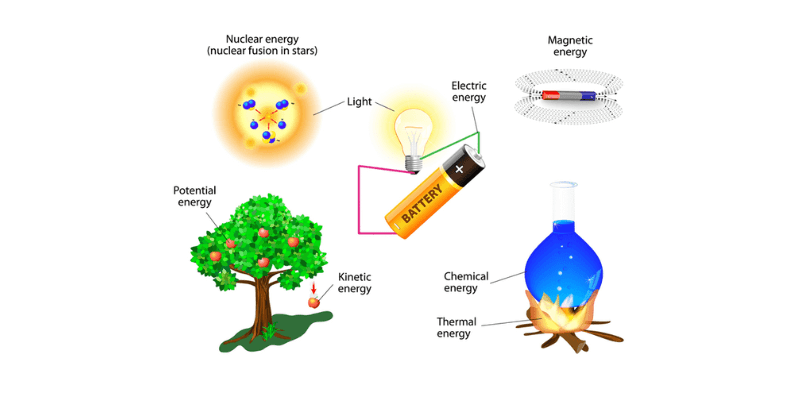
Puoi conservare l'energia elettrica?
No, non è possibile conservare direttamente l'elettricità, ma può essere convertita in forme memorizzabili. Questa energia può successivamente essere convertita in elettricità. I metodi di accumulo di energia elettrica includono vola di fly (meccanici), acqua elevata o pesi (gravitazionale), aria compressa (potenziale), condensatori (carica elettrica) e le batterie più comuni (chimica).
Cos'è una batteria?
Una batteria è un dispositivo di stoccaggio che converte l'energia chimica in energia elettrica. Contiene una o più celle elettrochimiche in cui le reazioni chimiche creano un flusso di elettroni, fornendo la corrente elettrica necessaria per eseguire il lavoro.
Le batterie funzionano come pompe di elettroni, con un lato positivo (catodo), un lato negativo (anodo) e un elettrolita Ciò reagisce chimicamente con loro.
Mentre questo processo è comune in tutte le batterie, diversi tipi immagazzinano energia in modi unici.
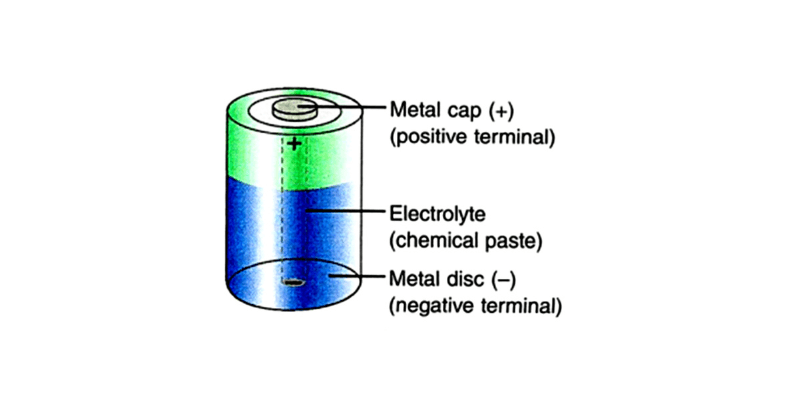
Tipi di batteria comuni & Come immagazzinano energia
Per uso industriale e commerciale, esistono due tipi principali di conservazione ricaricabile per l'energia della batteria, che differiscono per le prestazioni.
Batterie al piombo-acido
Le batterie al piombo-acido, oltre 170 anni, sono uno dei più antichi tipi di batterie ricaricabili.
Ogni batteria da 12 volt è composta da sei celle con una miscela di acido solforico e acqua, con un terminale positivo (catodo) e un terminale negativo (anodo).
Quando è scaricato, l'acido solforico si rompe in acqua, rilasciando elettroni per la generazione di elettricità. La reazione chimica sulla piastra negativa è: Pb (S) + HSO - 4 (AQ) → PBSO4 (S) + H + (AQ) + 2E−
Durante la ricarica, l'energia ricostruisce le molecole acide per un uso futuro.
Sebbene affidabili e ampiamente utilizzate, le batterie al piombo-acido hanno limiti; I cicli ripetuti di re-change possono ridurre la durata della vita a causa del degrado del materiale attivo.
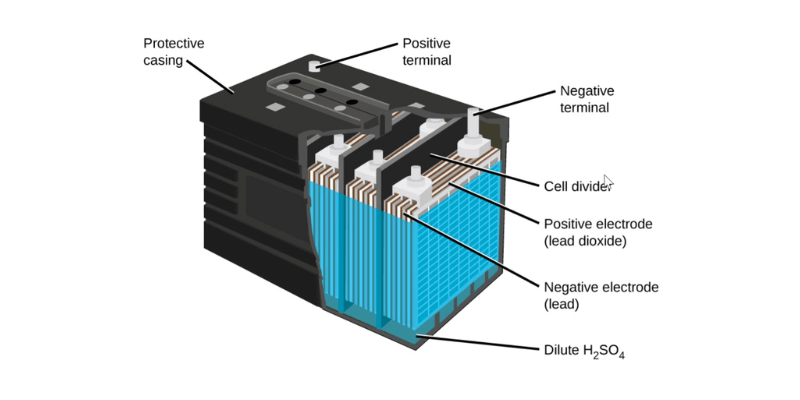
Batterie agli ioni di litio
In precedenza, abbiamo parlato catodi e anodi nelle batterie. Possono conservare gli ioni di litio e l'energia viene immagazzinata e rilasciata mentre gli ioni si spostano dal catodo all'anodo attraverso l'elettrolita.
A differenza delle batterie al piombo-acido che utilizzano la stessa reazione chimica, le batterie agli ioni di litio sono disponibili in vari chimici. IL I 6 tipi principali Includi ossido di cobalto di litio (LCO), ossido di manganese al litio (LMO), ossido di cobalto di manganese del litio nichel (NMC), ossido di alluminio cobalto di nichel di litio (NCA), litio titanato (LTO) e fosfato di ferro litio (LFP).
Le batterie al litio sono dense di energia, più piccole, più leggere, caricate più velocemente e hanno una durata più lunga rispetto alle batterie al piombo-acido.
Batterie al litio in ferro fosfato In particolare sono noti per la loro lunga durata e tolleranza al calore, rendendoli più sicuri e più durevoli.
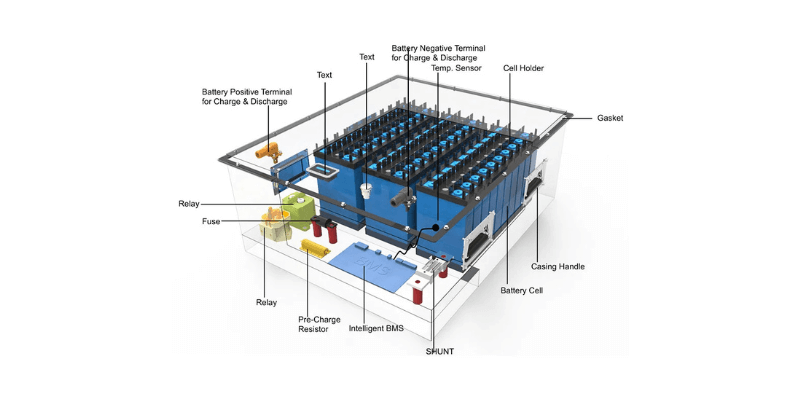
I vantaggi dello stoccaggio dell'energia della batteria
Vantaggi di una rete di energia pulita flessibile
L'implementazione dello stoccaggio energetico è accelerato a causa della sua capacità di migliorare la flessibilità della rete, fornire più servizi ed essere applicata tra varie applicazioni.
I sistemi di stoccaggio possono essere integrati nella rete elettrica – Dalle reti di trasmissione agli edifici residenziali.
Le fonti di energia rinnovabile come il vento e il solare hanno uscite variabili; Pertanto, le tecnologie di stoccaggio possono stabilizzare l'offerta di elettricità abbinando la generazione con la domanda.
Caricandosi durante i periodi di generazione in eccesso e scarico durante il picco della domanda, lo stoccaggio di energia massimizza l'uso rinnovabile e minimizza i rifiuti. I sistemi di batterie residenziali aiutano le utility ad abbinare la domanda dei clienti con alimentatori variabili.
Lo stoccaggio aiuta anche a rispondere a improvvisi cambiamenti nelle esigenze di elettricità, garantendo la stabilità della rete più rapidamente rispetto alle centrali convenzionali. È particolarmente importante per le aree rurali o per microgrid isolate che si basano su soluzioni energetiche locali per evitare blackout.
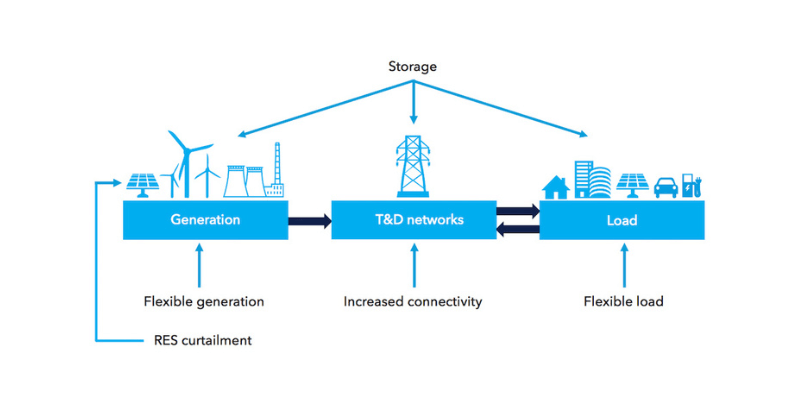
Benefici della comunità
Lo stoccaggio di energia può migliorare l'accesso e fornire vantaggi per le comunità a basso reddito influenzate in modo sproporzionato dall'inquinamento e dai cambiamenti climatici. Può sostituire le piante di picco del carburante fossile – Spesso situati in quartieri vulnerabili che aggravano i problemi di qualità dell'aria durante periodi ad alte richieste come le onde di calore.
Con lo stoccaggio della batteria più economico delle turbine a gas, il passaggio dai picchi accelererà.
Inoltre, lo stoccaggio di energia aiuta i clienti a evitare i prezzi di picco livellando i picchi di domanda simili alle spalle dei costi di rideshare durante le vacanze. Migliora la resilienza della comunità soddisfacendo le esigenze di punta senza sforzare la rete o causando picchi di prezzo durante il tempo estremo.
Integrando l'energia generata rinnovabile in microgrid localizzate o hub di resilienza, le comunità ottengono l'approvvigionamento di energia di backup durante le catastrofi naturali riducendo le emissioni di gas serra e la dipendenza dall'inquinamento dei combustibili fossili.
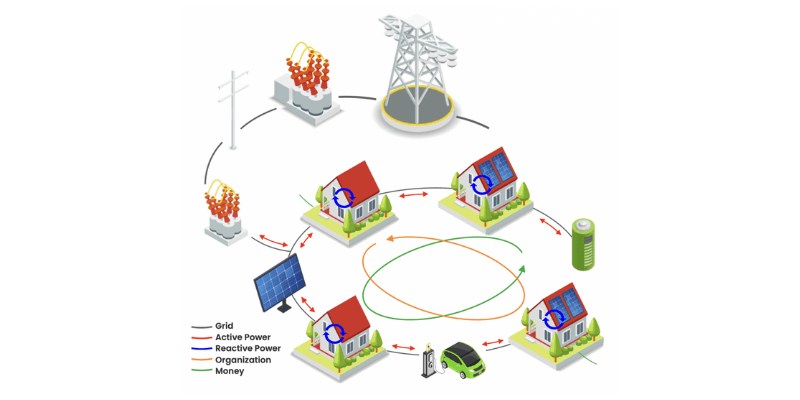
Conclusione
Molte persone usano per la prima volta batterie a Rving o in barca, dove l'accumulo di energia affidabile e sicura è essenziale per il comfort. Le batterie immagazzinano energia per la conversione in elettricità, migliorando la nostra vita e fornendo libertà. Questo potere è sinonimo di libertà stessa.

